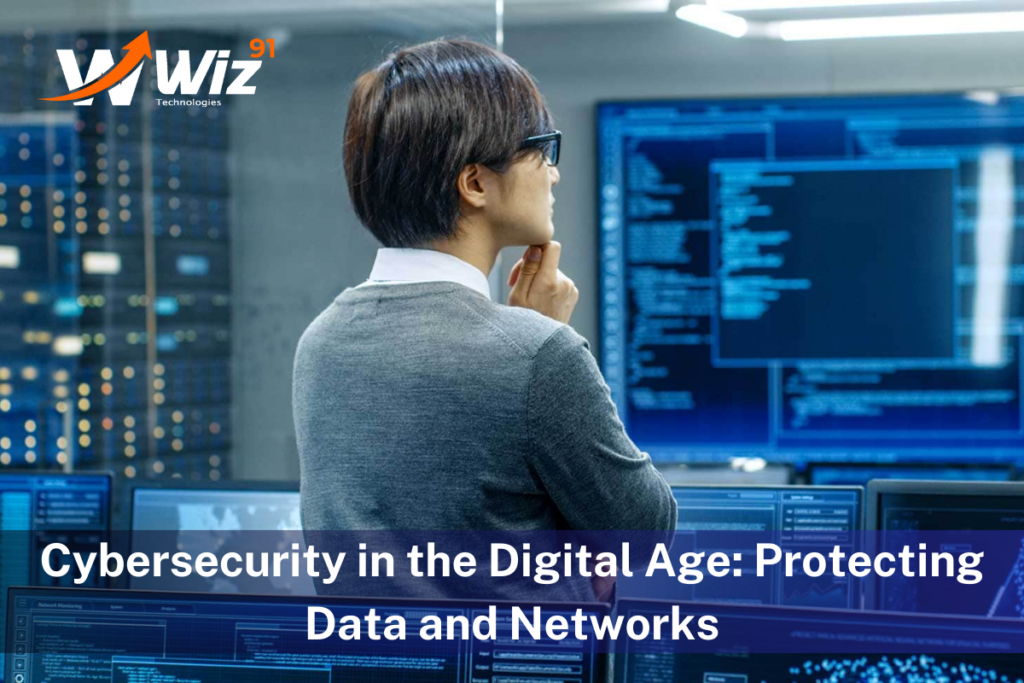Introduction:
In the rapidly advancing digital age, where technology has become an integral part of our lives, the importance of cybersecurity cannot be overstated. With the increasing interconnectedness of devices, networks, and systems, the risk of cyber threats has multiplied. This blog will explore the significance of cybersecurity in safeguarding data and networks, as well as discuss the various challenges and strategies involved in protecting against cyber attacks.
I. The Evolving Cyber Threat Landscape
In recent years, the threat landscape has evolved significantly, with cybercriminals employing sophisticated tactics to exploit vulnerabilities and compromise data and networks. From data breaches and ransomware attacks to phishing scams and social engineering techniques, organizations and individuals face a wide range of threats. The rapid adoption of emerging technologies, such as cloud computing, IoT devices, and artificial intelligence, has further expanded the attack surface.
II. Understanding the Importance of Cybersecurity
Cybersecurity plays a crucial role in safeguarding sensitive data, maintaining business continuity, and protecting the privacy of individuals. A breach in security can lead to severe consequences, including financial loss, reputational damage, and legal liabilities. Moreover, the interconnected nature of networks means that a single vulnerable point can jeopardize the entire system, making robust cybersecurity measures imperative.
III. Key Elements of Effective Cybersecurity
a. Risk Assessment: Identifying and evaluating potential risks and vulnerabilities within an organization’s infrastructure is the first step toward implementing effective cybersecurity measures.
b. Strong Access Controls: Implementing stringent access controls, including multi-factor authentication and privileged access management, helps prevent unauthorized access to sensitive data and systems.
c. Regular Updates and Patch Management: Keeping software, applications, and operating systems up to date with the latest security patches helps mitigate vulnerabilities exploited by cybercriminals.
d. Employee Education and Awareness: Educating employees about cybersecurity best practices, such as recognizing phishing attempts and practicing good password hygiene, is critical in minimizing human errors that can lead to breaches.
e. Data Encryption: Implementing encryption techniques ensures that even if data is intercepted, it remains unreadable and unusable to unauthorized individuals.
f. Incident Response and Disaster Recovery: Having a well-defined incident response plan and backup strategies in place enables organizations to respond swiftly and effectively in the event of a cyber attack.
IV. Emerging Trends and Technologies in Cybersecurity
To combat the evolving cyber threats, new trends, and technologies are emerging in the field of cybersecurity. These include:
a. Artificial Intelligence and Machine Learning: AI and ML algorithms can help detect anomalies and patterns indicative of cyber attacks, enhancing threat detection capabilities.
b. User Behavior Analytics: Analyzing user behavior can help identify suspicious activities and potential insider threats.
c. Zero Trust Architecture: This approach assumes no trust by default, requiring users and devices to continually authenticate and verify their identity before accessing resources.
d. Blockchain Technology: Blockchain’s decentralized and immutable nature can enhance data integrity and strengthen authentication processes.
Conclusion:
In an increasingly digitized world, where cyber threats are pervasive, cybersecurity is of paramount importance. By implementing robust security measures, organizations and individuals can safeguard their data, networks, and systems from malicious actors. Continual education, proactive risk assessment, and the adoption of emerging technologies will be key to staying ahead of the ever-evolving cyber threat landscape. Remember, cybersecurity is a collective responsibility, and together we can build a safer digital future.










